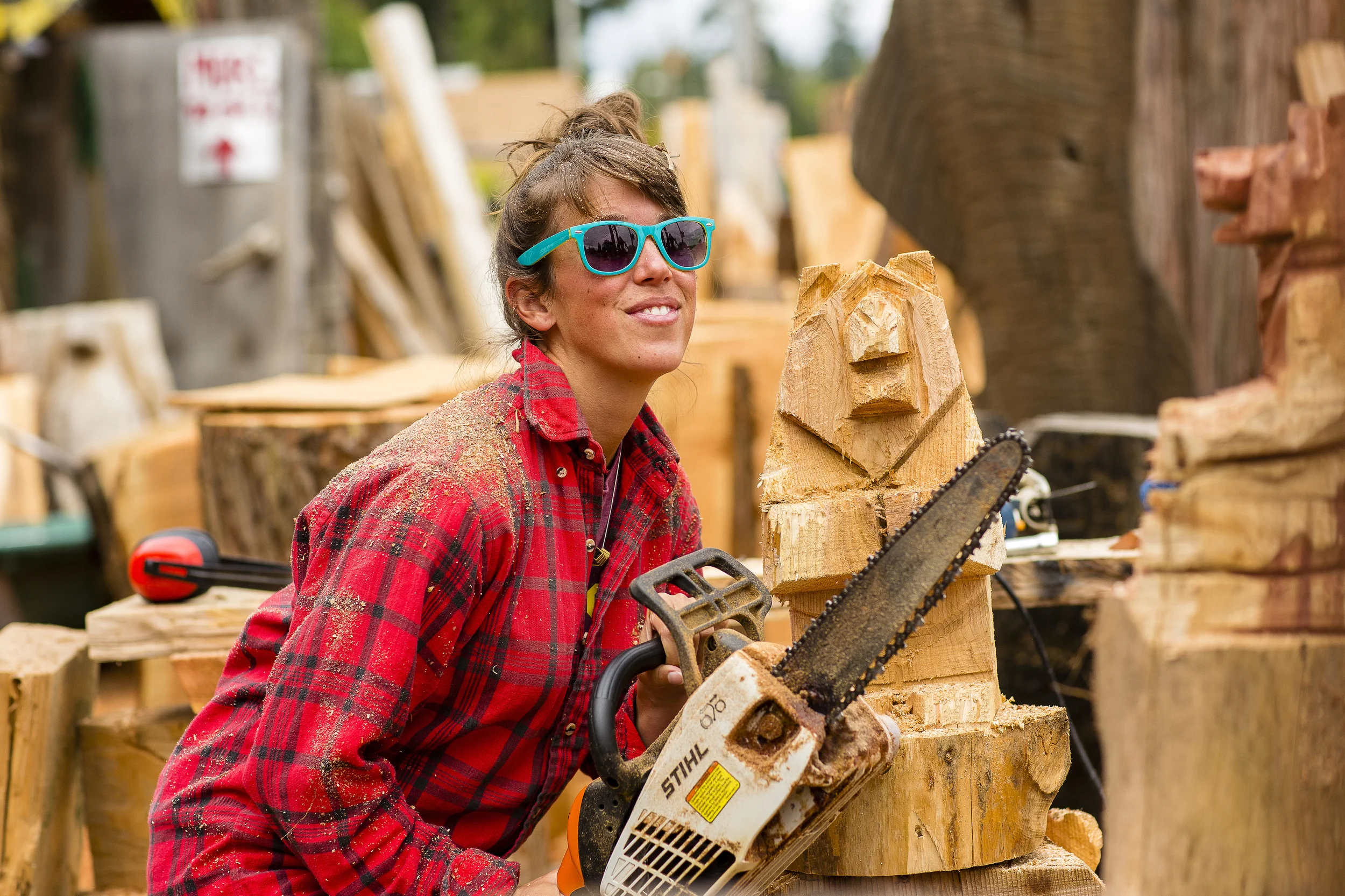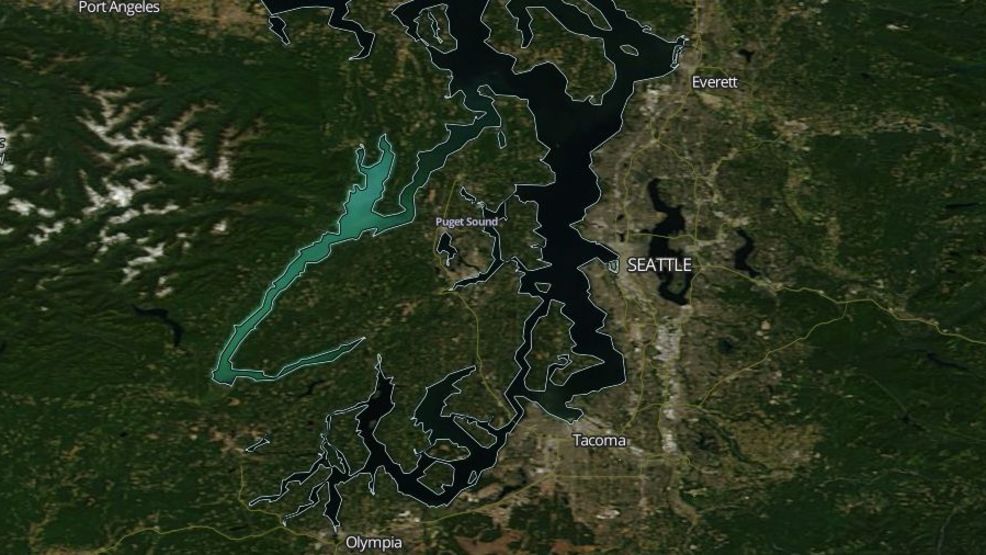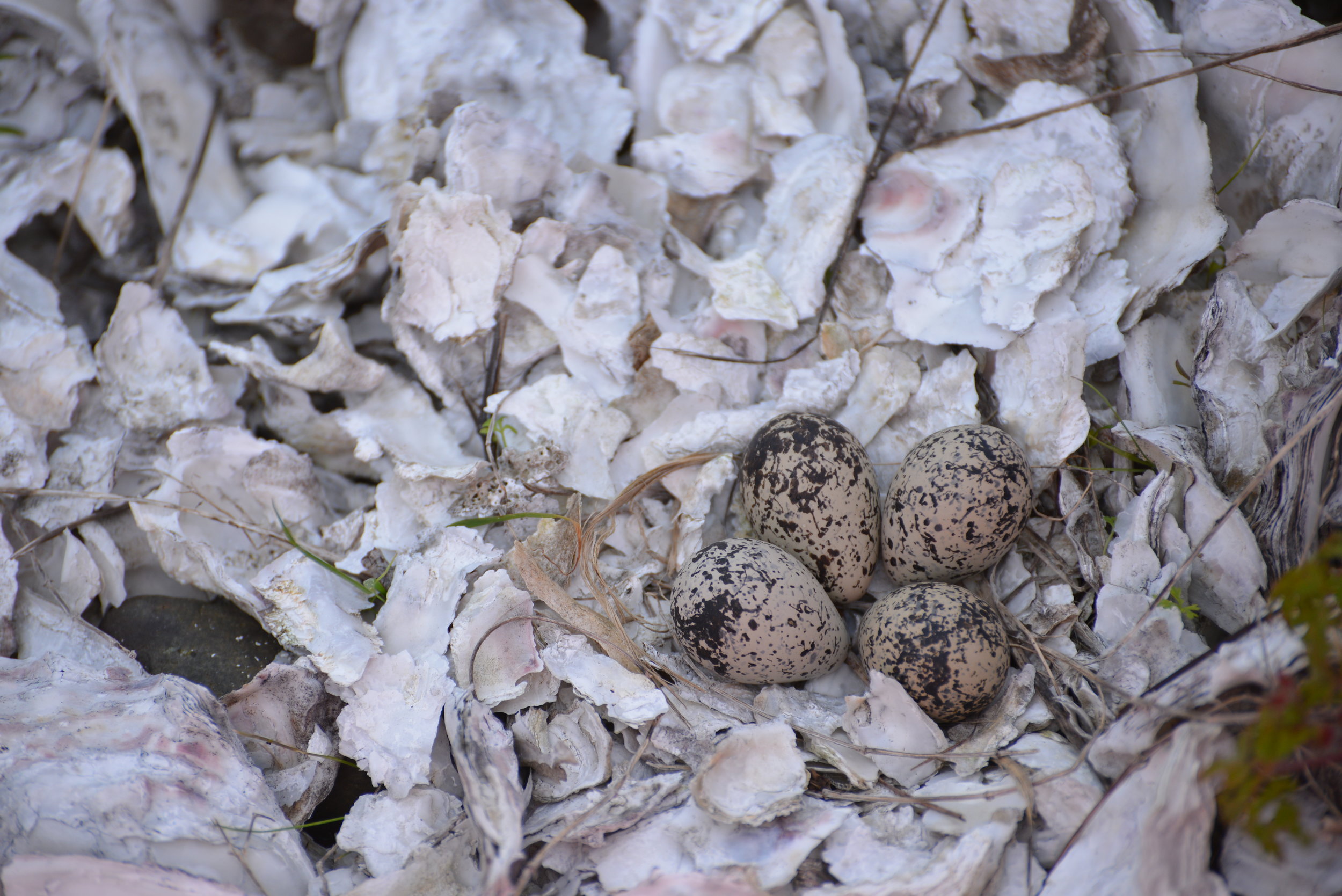
Five Northwest Books to Read While the Rain Falls
Okay, we’ll admit it: snuggling down against a winter storm under a mountain of blankets with a hot toddy and a snoring dog sounds like unabashed bliss for the bookworms among us.
The weather on Hood canal is ever changing and unpredictable. Sometimes it offers the perfect excuse to take a break from dodging rain soaked branches and curl up with a great book. Snuggling downunder a mountain of blankets with a hot drink and a snoring dog sounds like unabashed bliss for the bookworms among us.
While Netflix may dominate others’ rainy afternoons, we dare you to rebel with good old-fashioned literature. We pared our favorite Northwestern fiction, non-fiction, poetry, and kid’s books down to five of our favorites. There's lots of choices and chances for good book conversation and recommendation at the local branches of the Timberland Regional Library in Shelton, Hoodsport and Belfair.
1. The Mushroom Hunters: On the Trail of an Underground America by Langdon Cook
As with most of the delicious and sought-after delicacies the world has to offer, decadent morels, luxurious truffles, and other elusive mushroom treasures are hidden away in hard-to-access places. Seattle author Langdon Cook juxtaposes the high-class, refined people to whom these mushrooms are presented with the rugged denizens who forage for them in the Northwest’s most inaccessible woods. Seized by Gold Rush-like desires, this rough and territorial lot hauls hoards of edible fungi from the misty hills. As much a culinary history lesson as it is a compelling and character-driven narrative, The Mushroom Hunters is a must-read for someone as enchanted by adventure as by the world of fine dining.
This book is available for download and audio book Grab a library card and click here.
2. Sometimes a Great Notion by Ken Kesey
Although Kesey may be better known for his Jack Nicholson-endorsed One Flew Over the Cuckoo’s Nest, his epic Sometimes a Great Notion is arguably the quintessential Northwest novel. Many claim that it’s one of the greatest American literary works of all time, period. Its setting is a fictional costal city in Oregon at the confluence of the also-fictional Wakonda Auga River. The parallels between this old waterlogged logging town and historical Hood Canal are stark. The gravity with which Kesey is able to illustrate man vs. land in this masterpiece is powerful for a reader curled up with a Northwest winter gale at her window. It is an experience that sticks with the reader long after the book is returned to the shelf.
This book is available for download and audio book as well! Grab a library card and click here.
3. Long Journey: Contemporary Northwest Poets by David Biespiel
In his eloquent introduction, editor David Biespiel writes, “A Northwest poet’s impact on our sense of how we see the Northwest may be greater than the Northwest’s impact on the poet.” As such, poets included in this anthology were born in the Northwest…and elsewhere. Likewise, their poetry revolves around images of recognizable Northwestern iconography…or not.
This collection evades reduction to a single concrete theme, but the Northwest lives and breathes within these pages. They grasp at and, in a quirky way, get ahold of what we see and feel while we’re here. Let the 80 poets in this masterpiece impact how you see our Northwest.
This book is available through the Timberland Library System. Click here to order
4. The Far Corner: Northwestern Views on Land, Life, and Literature by John Daniel
John Daniel blurs the lines between natural, literary, spiritual, and human history—to the reader’s delight. As much of a personal memoir as it is a meditation on the relation between man and nature, these 18 wide-ranging essays attempts to capture the Northwest’s character as a whole.
Both lyrical and informational, this collection entices those who are eager to learn, and those who are eager to be entertained. A winner of the Oregon Book Award, this work belongs on the shelf of everyone who has stepped foot in Hood Canal.
5. Where Would I Be In An Evergreen Tree? By Jennifer Blomgren
A story to delight the little ones, this work by Northwesterner Jennifer Blomgren follows the lifecycle of an evergreen tree. Her smooth verse is gently informative, while Andrea Gabriel’s pastel images in soft greens, quiet blues, and warm browns illustrate the host of animals that inhabit these northwestern deciduous behemoths.
Blomgren’s other works, like Where Do I Sleep? and Why Do I Sing? are equally as educational and comforting for kids adventuring through Hood Canal. This is one to keep in the car on your next road trip.
For more suggestions and ideas to enhance your experience in Hood Canal, keep up with us on Facebook, and Instagram. Share photos of your bookworm selves with us—we love to feature photos! Tag your social media with #wildsideWA. Cheers to the page-turners!
Get Your Carve On: George Kenny’s Chainsaw Carving School
That funky wooden bear was a staple to your grandparent’s front yard, and there’s always the one quirky neighbor on the block that has one—but did you know there are entire competitions centered on chainsaw carvings? Did you know there exists a chainsaw carving school in Allyn that will teach you how to make one of your own? Truth and truth.
That funky wooden bear was a staple to your grandparent’s front yard, and there’s always the one quirky neighbor on the block that has one—but did you know there are entire competitions centered on chainsaw carvings? Did you know there exists a chainsaw carving school in Allyn that will teach you how to make one of your own? And almost always has a live demonstration going on? Truth, truth, and truth.
George Kenny and his wife Diane own a combination wine shop and chainsaw carving school in Hood Canal, and people flock from all over for a chance to have at an old log with a chainsaw. As Brian Ruth, professional chainsaw artist was noted as saying, “If Michelangelo had had a chainsaw, he probably would have used it.”
There’s a whole culture centered on chainsaw carving, and George is equipped with over 20 years of experience creating and teaching. His introduction class teaches a myriad of skills and equips students with the know-how to keep at this quirky art form.
At the time of its first settlement, the Olympic Peninsula depended, and came to thrive on one of its most prolific natural resources—wood. Founded in 1890, Simpson Lumber Company, operating out of Shelton (just a short jump from Allyn) is one of the oldest, continuously operating lumber companies in the Pacific Northwest.
A history rooted in woodcraft breeds artistic culture centered on it. The primitive craft of woodcarving has evolved over time coinciding with the invention of technology like the chainsaw. Contemporarily, chainsaw carving encompasses a sweeping variety of styles, skill levels and themes—some artists prefer to be strictly performance artists.
George Kenny is a wealth of historical, artistic, and technical information when it comes to chainsaw carving. It’s surely reflected in the varied and intricate carvings that fill the yard surrounding his school, and studied by the staggering number of people that have taken his class over the years.
If perusing mind-blowingly intricate, carved wooden oddities is up your alley, the Kennys care to host, boasting an extensive sculpture garden chock full of quirky creations ranging from NW native creatures, to native inspired works of art, to classic bears and more. To peek at this spectacle, stop by any day of the week between 9am and 5pm.
And, at the end of an afternoon poking around all corners filled with over 600 carvings, bounce next door to Top of the Cork for a tasty sampling of locally sourced wines.
There’s never a lack of fun, new, sometimes out-there things to do in Hood Canal. Keep up with us on Instagram, Facebook, Twitter, and Pinterest.
Hood Canal "Glamping"
If your idea of a camping excursion is freeze dried food and dry shampoo – and luxury to you is a bed of moss under your sleep sack or a solar-powered lamp – "glamping" may not hold much interest for you. Glamping or "glamor-camping" as the name suggest, goes WAY beyond the coleman stove and solar shower upgrade. If you crave a star-studded forest canopy while enjoying gourmet camp cuisine and all the comforts of home – bed, pillows, duvet, light switches– glamping may be a great compromise to get outdoors!
If your idea of a camping excursion is freeze dried food and dry shampoo – and luxury to you is a bed of moss under your sleep sack or a solar-powered lamp – "glamping" may not hold much interest for you. Glamping or "glamor-camping" as the name suggest, goes WAY beyond the coleman stove and solar shower upgrade. If you crave a star-studded forest canopy while enjoying gourmet camp cuisine and all the comforts of home – bed, pillows, duvet, light switches– glamping may be a great compromise to get outdoors!
Header Image credit: Poppi Photo
One of the best thing about "camping" is relaxing with a final roasted marshmallow and a steaming mug of hot chocolate. Wrapped in a cozy blanket, the tall trees keep you close in the inky darkness beyond the glow of the fire. Far from the glow and clatter of the city, the sky displays a covering of unrealistically bright stars. Good conversation and the people you love surrounding you. Who wants to consider the uncomfortable night ahead? Rocks in your lumbar. Slick "high performance" sleeping cocoons that tangle and suffocate. Never mind the 3:00 AM Call of Nature. Stumbling through the dark stubbing toes and tripping over roots.
Trailer camping is technically considered in the "glamping" category, above the waterfront view and tall trees at Twanoh State Park, Hood Canal definitely set the standards high.
Enter glamping. A purist would say if you want the experience of camping you need to embrace the whole experience, not cherry-pick the best parts. Galen Patterson, a journalist with Arcadia Weekly, remarks in a recent article, "in its luxury, comfortable camping (glamping) loses what makes the experience worth the discomfort in the first place." He goes on to say that, "instead of connecting with nature and all of its uncomfortable facets, people are bringing the comforts of home with them, and, in doing so, are sapping the spirit of what it means to connect to the outdoors." Patterson advocates that through discomfort and deprivation, he "finds appreciation and, with it, follows a new zest for life."
Hmmmm. So unless you are suffering you will not appreciate the wilderness? Good riddance. Rough camping has its place – when space is limited in your kayak or you are pack/wilderness camping and every extra ounce needs to be "weighed" in necessity. However, if you can enhance the joy of spending time outdoors by increasing the comfort level – there is no shame in that!
There are plenty of definitions of glamping. Some feel that cooking on anything beyond an open campfire is glamping. Others consider having cell service a mark of glamor camping. Perhaps it's sleeping in a bed off the ground, in a cabin or RV. Whatever the case, glamping is a more glamorous spin on camping and it is bringing a whole new level of interest to the camping scene. Love it or hate it, glamping is a thriving trend that continues to grow.
Give it A Try....
Belfair State Park is a 65 acre, year-round camping park on 3,720 feet of saltwater at the southern end of Hood Canal. It is noted for its saltwater tide flats, wetlands with wind-blown grasses and pleasant beach walking and swimming. Cabins sleep five and are furnished with tables and chairs. Outside is a picnic table and fire pit. Bathrooms and showers are nearby. All cabins are heated, but visitors should take along blankets and warm clothing as evenings can be cool. Belfair cabin rates range from $40 (off-season) to $69(peak). Reserve
Dosewallips State Park offers canvas platform tents for rent. Situated in a maple forest near the Dosewallips River, the tent sleeps up to five people. Made of white canvas on wooden platforms, they are light inside, even on cloudy days. Each tent has three bunks, a futon, lights, table and heater. Outside is a deck, picnic table, fire grill and utility hookup. Bathrooms nearby. All platform tents are heated but campers must bring their own bed linens. Cabins at Dosewallips are situated among evergreen trees looking towards the Olympic Mountains. Each cabin features a covered porch, electric heat, lights and locking doors. Bathrooms are nearby. Tent and cabin rates range from $40 (off-season) to $69 (peak). Reserve
Hamma Hamma cabin is available through the Olympic National Forest
The Hamma Hamma Cabin in the Olympic National Forest is a historic cabin that offers guests a tranquil setting. Formerly a guard station, the cabin was built in 1937 by the Civilian Conservation Corps. The site is nominated to the National Register of Historic Places for the skill and craftsmanship that went into its construction and architecture. The cabin is open year-round. Accommodating up to six guests, the single-story cabin features a living room with a hexagonal bay window overlooking the Hamma Hamma River drainage. There are two bedrooms, one with a double bed and one with bunk beds. The bathroom has a flush toilet. The cabin is equipped with a propane heater and propane lights. An outdoor picnic table, fire ring and pedestal barbecue grill are available for cooking and campfires. Guests provide their own bedding, linens, towels, dish soap, matches, first aid kit, toilet paper and garbage bags. Reserve

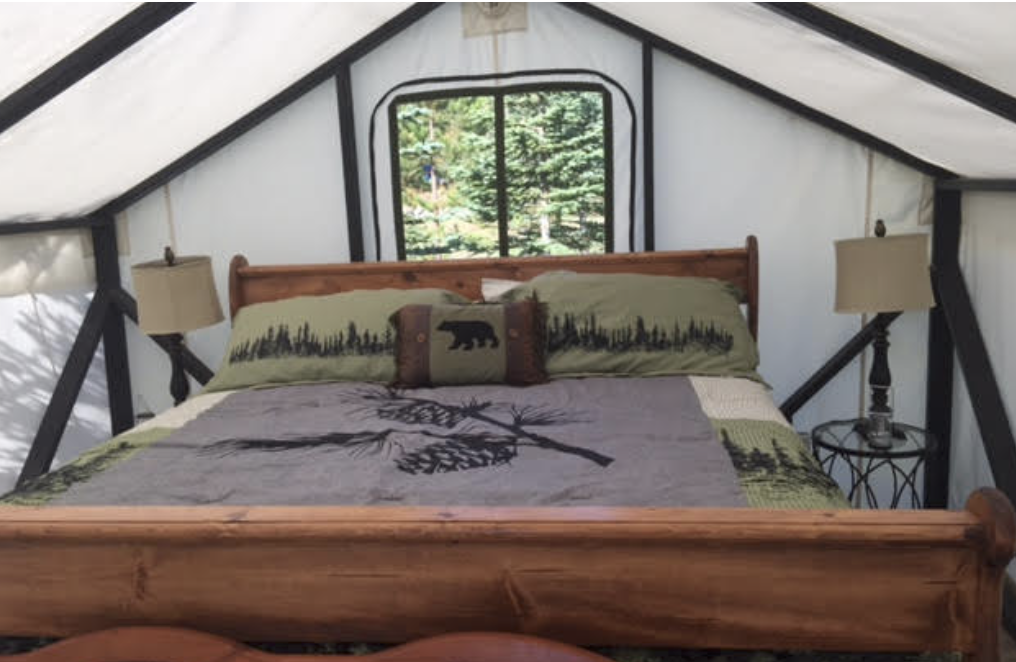
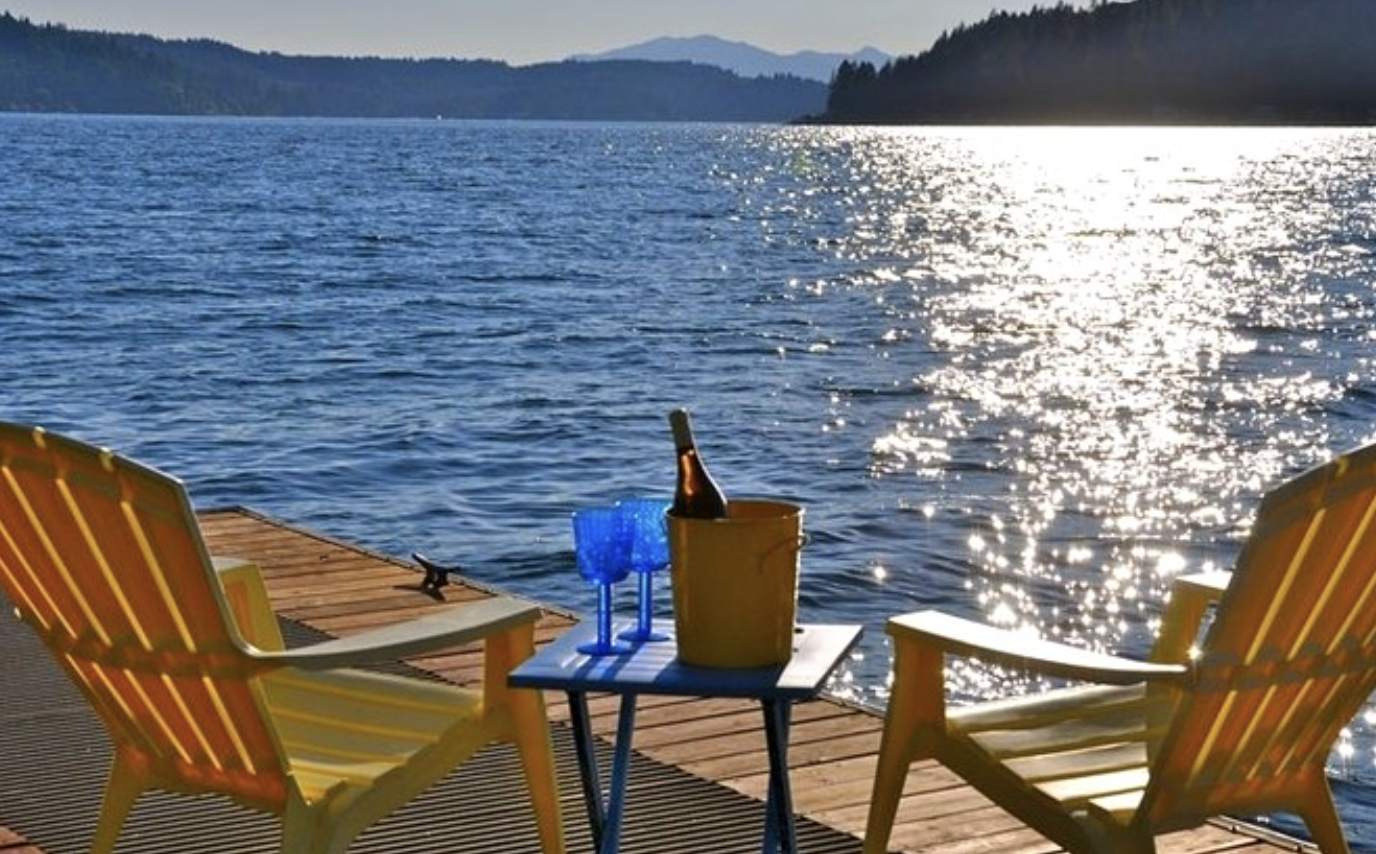
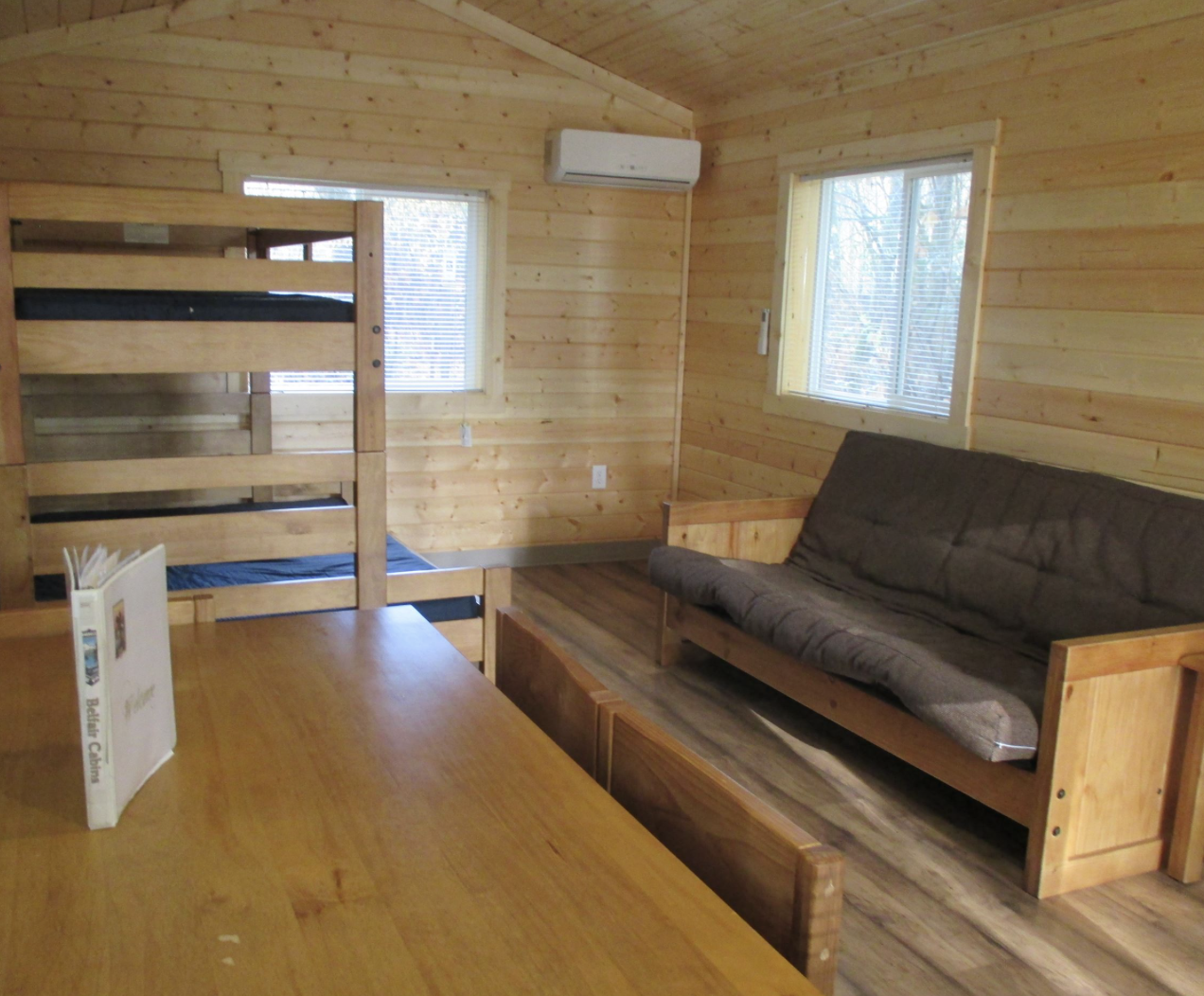
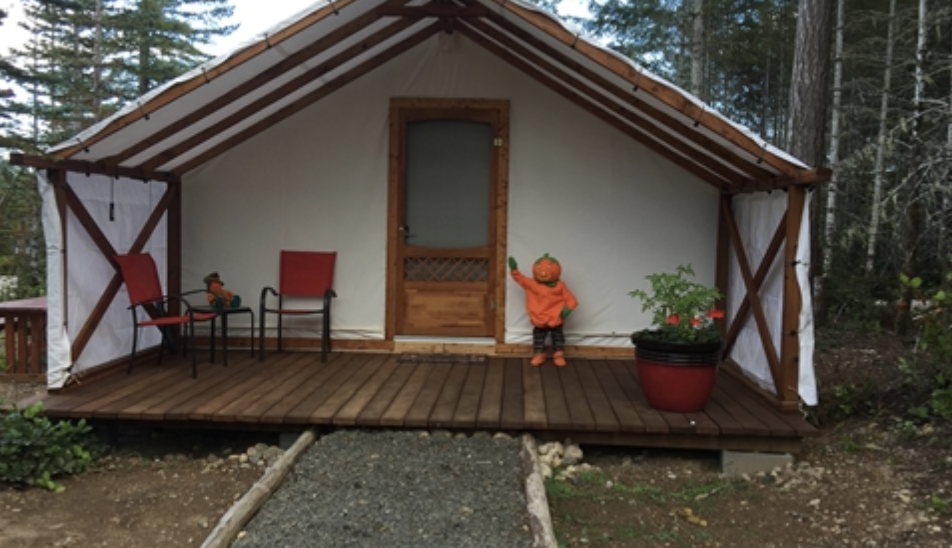
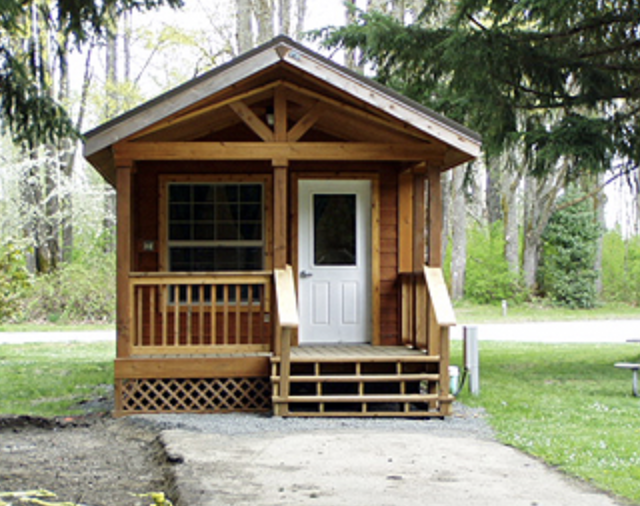
Located in Union, the Pebble Beach Cottage has two beds, one bathroom and can sleep up to 5-6 guests. Sitting approx. 75 feet from the water it has a beautiful view of the canal, and surrounded by a cedar forest. This carriage house is a bed and breakfast style stay with a part-time caretaker on sight. Guests enjoy privacy of a vacation home, (as this property is completely separate from the main house), yet access to concierge services. (Rate $195) Reserve at glampinghub.com.
The Tahuya Adventure Resort is located in the heart of the Tahuya Forest past Belfair. Featuring campsites with hook-ups and luxury platform tents, this is glamping heaven! The Log Cabin tent features a king size log bed, bunk-beds, oversized chairs and tables, pellet stove, carpet, refrigerator, microwave, and a coffee pot. Each site has an outdoor picnic table and fire ring or you are welcome to use their covered kitchen. (Rate $500/2 nights) Reserve at tahuyaresort.com.
The ultimate "glamping" experience can be provided by Hood Canal Events located in Union, WA. For a fee they can arrange the perfect getaway for you and your signifigant other – or the whole family. From setting up the camp & tent (pictured above) in a spectacular location, arranging tours, hikes or kayaking expeditions, to chef prepared gourmet meals in your camp – Jeff and Kerry can take care of it all for you. Call them directly at (360) 710-7452 or visit hoodcanalevents.org. Photo Poppi Photography
Hood Canal Events, based in Union, can provide unique glamping experiences. Offering everything from a Hood Canal beach glamor picnic (great for intimate gatherings, family picnicking, lounging, or celebrations) to a fully catered overnight trip, they can arrange special requests your group may have. Hood Canal Event's packages include furnishings, amenities, activities (kayaking to mushroom foraging or live music) and a chef for locally prepared food and beverages. Overnight glamping packages are available. For information on rates or customizing an experience, call (360) 710-7452, or visit hoodcanalevents.org.
Above are just a few ways you can elevate your "glamping" experience on Hood Canal. There is no wrong way to do it. If you prefer backcountry camping, with your home on your back and no connection to civilization, the Olympic National Park has that too. Camp for days and never see another soul in the backcountry areas. Talk about "finding appreciation."
If camping or glamping is not your thing thats cool too. Hood Canal and South Puget Sound have wonderful guest lodging and rentals right on the beach – with power and flush toilets. Visit explorehoodcanal.com/lodging for a complete list that is updated weekly.
Whatever you choose, just get out there and create some great memories – stubbed toes or not!
Tracing the Fjord
The Hood Canal fjord formed during the Late Pleistocene era approximately 13,000 years ago when the Cordilleran Ice Sheet retreated. The ice sheet excavated the channels of Puget Sound, Lake Washington, Hood Canal, and other long, straight valleys in the Puget Sound area.
Like a giant fish hook snaking around glacier capped peaks, lush rain soaked forests and spanned by a web of waterways and inlets, the Hood Canal is poised to catch your imagination and reel in memories for years to come.
The Hood Canal fjord formed during the Late Pleistocene era approximately 13,000 years ago when the Cordilleran Ice Sheet retreated. The ice sheet excavated the channels of Puget Sound, Lake Washington, Hood Canal, and other long, straight valleys in the Puget Sound area.
“Christened “Hood’s Channel” by Captain Vancouver when he traced the shores of the sixty mile fjord in May 1792, the Twana people have called this hook of saltwater “home” for countless generations before European arrival.”
A NASA MODIS satellite image showing the teal-colored Hood Canal as a 2017 plankton bloom covers the Canal a harmless but tropic aquamarine. (Photo: NASA/MODIS)
The curious question as to how did the massive glacier turn in it’s course to create the “hook” may be answered by examining a combination of forces including the formation of great glacial lakes and erosion. The broad valley of the Skokomish River joins the southern tip of the Canal from the west in much the same way as the arm “hook” joins from the East.
As the Skokomish valley cut down through the valley it joined the glacier lake with the major fjord thereby creating the “L- shaped” channel. This troughing of the glacial till and erosion may account for the massive sills of glacial sediment that make up the sea floor in many areas of the Canal.
Christened “Hood’s Channel” by Captain Vancouver when he traced the shores of the sixty mile fjord in May 1792, the Twana people have called this hook of saltwater “home” for countless generations before European arrival.
Spending winters in villages near the mouths of the major rivers, the Twana people lived in cedar plank homes and enjoyed a rich culture and livelihood on the fjord. Salmon, clams, plants, and game provided year round generous bounty for their families.
The warmer months were marked with visits to neighboring settlements as well as further journeys to trade with people from as far away as what is now Alaska’s outer coast.
In 1792, Vancouver ventured into Hood Canal in longboats. He left his ships, the Discovery and Chatham, in nearby Port Townsend. Vancouver and his crew journeyed as far as the mouth of the Skokomish River, where Menzies, his botanist, was amazed by the rich vegetation as well as the natural beauty of the area. He wrote in his journal, “here the arm was hemmed in by lofty Mountains on one side and low flat country of considerable extent on the other.”
After a few days of exploration and trade with the Twana people, Vancouver and his men retraced their path out of the Canal leaving behind a legacy of European names in their wake.
Over two centuries later the Canal remains much the same. The settlements are replaced with small towns and knots of houses. Harvested hillsides have regrown new forests. The water route is replaced with a two lane highway that follows the shoreline.
“As Highway 101 meanders along the canal edge, we pass pockets of civilization and catch glimpses of the beauty through the trees.”
Hood Canal is renown as a diving mecca as its glacial fjord formation caused underwater biomes that appear no where else. Adventurers travel worldwide for the area’s spectacular hiking, boating, fishing, camping and relaxing opportunities. Heralded for its rich timber history and aquaculture resources it is the place where many of us choose to raise our kids and build our livelihoods.
10 Mispronounced words around Olympic National Park
Tromping through the park and the surrounding areas is admittedly our favorite thing to do, but sometimes asking for directions can be tricky. Especially when we slip up and ask for a “geo-duck” (geoduck). Reduce your noob status and read on to ensure that when you have to flag a local down, you don’t get a suppressed giggle along with directions.
This untamed tangle of rivers and trails, bursting at the seams with a prolific abundance of flora is (in our humble opinion) one of the most beautiful places on earth.
When Joseph O’Neil and his Olympic Exploring Expedition embarked in the late 1800’s, they were determined to slice a path through this unconquerable wilderness. The team was turned back time and again by the behemoth mountains and unconquerable terrain. Instead of finding the route he had hoped for, O’Neil emerged with an inextinguishable intent to turn it into the protected national park that we enjoy on the daily.
Channeling the intrepidness of the Olympic Exploring Expedition by tromping through the park and the surrounding areas ourselves is admittedly our favorite thing to do, but sometimes asking for directions can be tricky. Especially when we slip up and ask for “see-kwim” (Sequim) or for a “gooey-duck” (geoduck). Reduce your noob status and read on to ensure that when you have to flag a local down, you don’t get a suppressed giggle along with directions.
Get Your Tongue Oriented
1. Lilliwaup
The base camp of O’Neil’s Olympic Exploring Expedition and close to one of our favorite waterfalls (Rocky Brook Falls), Lilliwaup is both a mouth-full to pronounce and an eye-full for everyone that gets a peek of this lesser-trodden town.
2. Sequim
One of the sunniest places in Western Washington, Sequim is privy to excellent outdoor opportunities and one of the best lavender harvests in the world with a pretty incredible festival to go along with it.
3. Twanoh
This difficult-to-pronounce state park’s name is derived from the Native American Twana tribes who thrived on the canal’s seafood bounty and the surrounding area’s seemingly endless resources.
4. Tahuya
Tahuya is our favorite place to get dirty. And once it rains, muddy! It would be a shame to mispronounce Tahuya if it made you at all late to catch the shuttle vehicle (pictured above).
5. Dosewallips
The bouncy name purportedly comes from a Twana Native American myth about a man named Dos-wail-opsh who was turned into a mountain at the river’s source. In other news, we’ve found that it’s one of the best places to do handstands.
6. Dabob
One of Hood Canal’s favorite oyster spots, Taylor Shellfish Farms, utilizes the clean, clear waters of Dabob Bay for their hatchery. If you haven’t heard about Xinh and her clam and oyster restaurant that prepares the decadent shellfish to salty perfection then you should surely check it out. Mmm.
7. Hamma Hamma
The name is derived from the Twana Native American village called Hab’hab, which used to perch on the banks of the twice-named river. Apparently its namesake is a type of reed that grows in the region that roughly translates to “stinky stinky.”
8. hama hama (rhymes with mama)
Not to be confused with Hamma Hamma, Hood Canal’s other favorite oyster spot is named after the same river. However, it was founded in the early 1920s, before Washington State standardized the current spelling.
9. Skokomish
The Skokomish are one of the nine tribes of the larger Twana Nation. The name comes from two separate words, together meaning “big river people.” Contemporarily, if you ask for Skokomish, you’ll likely get directed to either the majestic cascading river pictured above or one of our favorite places to mountain bike.
Photo by Outdoors/Wild Food Blogger Langdon Cook
10. geoduck
Capping our list is the alien-looking, squirm-worthy clam. We kind of have a thing for them in Hood Canal. Don’t miss geoduck ice cream on your way through. Yeah, you heard us right.
Now that your tongue is all oriented, you’re ready to navigate your way through some of the most awe-inspiring wilderness and the surrounding towns that are steeped in western history. Until then, hang out with us on Facebook, Twitter, Pinterest and Instagram for more Olympic National Park adventure inspiration.
5 Reasons Why Olympic National Park Should Top Your To-Do List
Even someone as determined as John Muir couldn’t have poked around every nook in the 876,447 acres of this boundless wilderness haven. Here are our 5 reasons why you can’t afford to miss it—especially if you’re a Seattleite.
This mystical winter wonderland, full of a wildly varied flora and fauna, occupies a behemoth slice of our favorite state. The Olympic National Park, with its 3,000 miles of twisting, cascading rivers and streams (some even frozen in the heart of winter), its 611 miles of switchbacking, lesser-trodden trails, and only 168 miles of road, may be more enchanting and alluring than any other place we know. Even someone as determined as John Muir couldn’t have poked around every nook in the 876,447 acres of this boundless wilderness haven. Here are our 5 reasons why you can’t afford to miss it—especially if you’re a Seattleite.
1. Meet the locals (The furry ones!)
Massive bugling elk roam the dense and snowy woods while mountain goats own the craggy peaks. Over 300 species of birds soar through the skies (Washington Audubon has sketched out the perfect birder’s road trip map), and the ancient salmon runs are completing their runs as the first snow falls. That’s not to mention the infamous and somewhat legendary giant Pacific octopi that inhabit the Hood Canal–yes you heard us right.
2. Climb Mt. Ellinor in the snow
Going for the summit of Mt. Ellinor in the snow is a staggeringly beautiful experience. Meandering through quiet old growth forests and alongside craggy peaks, this hike serves up some serious views. A strenuous 6.2 miles round trip earns access to some seriously picturesque views of Hood Canal and beyond (assuming you're lucky enough to catch it on a clear day). Doable for all those with proper gear and plenty of time, it’s a must-not-miss. And that’s only one tiny slice of the 3,000 miles of beautiful trail contained within the park.
3. Climb The Big Rock at Lake Cushman
Lake Cushman, just outside the Staircase entrance to the park is host to kokanee salmon and cutthroat trout fishing in the summertime, and stunning views in the wintertime. A slew of other cold-weather activities like kayaking (with ALL of the proper gear) with Blue Horizons Paddlesports or climbing up the famed Big Rock and swearing to yourself that you'll be back during the summertime to jump off.
4. Stop for a warm up at Alderbrook Resort in Union, Washington
With all of the boundless opportunities for adventure in the Olympic National Park, face it: you’re going to be pooped (and probably cold). Lucky for you, there are a myriad places to rest your weary explorer’s head. If you’re hankering for a sojourn in a relaxing spa and a hot beverage afterwards, then Alderbrook Resort & Spa is for you! Though, if you’re feeling a quaint VRBO-style rent-a-home on a back road in the woods is up your alley then we have just the place. Click here for an extensive list of options.
5. Geting to Hoodsport is so easy
Staircase, one of the grandest entrances to the southeastern corner of the park is situated just outside of Shelton, a 45 minute drive from Olympia and two hours from Seattle. Hood Canal’s Hoodsport is an ideal launching point for an adventure in the park by way of Staircase, and the intrepid adventurers can hit the Staircase Rapids or snowshoe along the river after the snow starts to fall. With Hoodsport Coffee to properly fuel a morning’s adventure and Hardware Distillery’s handcrafted libations to cheers after a successful day tromping around the forested nooks, it’s worth checking out.
We’re convinced: life is about creating yourself. We choose to do it in one of the most beautiful places on earth. Adventure is spilling out of every nook. Plan your trip to come visit Hood Canal and the Olympic National Park.
For more adventuresome inspiration and ideas, keep up with us on Facebook, Twitter, Pinterest and Instagram.
Landscape Photography with George Stenberg
Though there are many factors that come together to make a good photographer—gear, dedication, understanding of theory, etc.—the one elusive quality that boosts George Stenberg’s craft into the upper echelon is timing.
Though there are many factors that come together to make a good photographer—gear, dedication, understanding of theory, etc.—the one elusive quality that boosts George Stenberg’s craft into the upper echelon is timing. This is often translated to photographers terms as patience.
Although many assume that being in the right place at the right time is happenstance, one look at Stenberg’s extensive collection suggests there’s something more sophisticated at play. Time and time again, he publishes jaw-dropping creations that not only make us fall even more in love with our own DSLRs, but with Hood Canal that continually provides these glorious moments.
Note: all photos featured in this post belong to George Stenberg.
Meet George Stenberg
He’s the man behind the image that makes you say, “whoa.” And rightfully so—his mission is simply in the right place. “The world is a wonderful, amazingly beautiful place,” he says, “look around and see for yourself. Let’s cherish it and take good care of it for those who come after us."
We caught up with him for a little Q + A.
What makes shooting around Hood Canal and on the Olympic Peninsula special?
The simplest answer is because I love the Hood Canal and the Olympic Peninsula. I grew up in a small community along the Puget Sound called Dash Point. I always love to being by the water.
As a youngster, my folks would take us on weekend trips to my Grandparents' cabin at Maggie Lake, near Tahuya. We would also spend a lot time with friends who had a cabin nearby on Hood Canal. My earliest memories of the fjord are the warm waters, oysters, and a rocky beach. This was way different from our cold water and sandy beach in Dash Point.
Swimming in warm water was much nicer. Also, just about every summer we would take a trip around the Olympic Peninsula on beautiful Hwy 101. We called it a trip "around the loop." So I developed this love for Hood Canal and the Olympic Peninsula in my early years and as they say, "shoot what you love," applies to me.
What camera gear do you use to keep focused on what you do best as a photographer?
My equipment is very modest. I use an Olympus E-3 DSLR with two Zuiko lenses, 12-60 f2.8 and 40-150 f3.5. I shoot in RAW files and develop the images in Photomatix and/or Smart Photo Editor.
The Photomatix works well when I use HDR (High Dynamic Range) photography to help me capture the scene as I remember it. The Editor software is for basic editing and enhancing to suit the image and my taste.
Which photographers influence your work?
Port Angeles landscape photographer Pat O'Hara has been a big influence. I purchased his book Washington—Images of the Landscape almost thirty years ago, and I still refer to it and am inspired.
The late great Galen Rowell has been another huge influence. Mountain Light is a must read for any inspiring photographer. If only I could emulate his technical understanding of light and his passion for photography.
Also, Jim Brandenburg is an environmentalist and nature photographer and filmmaker based near Ely, Minnesota. Jim's work is nothing but spectacular in many ways. One of his books, White Wolf, is also a must read everyone who enjoys nature and particularly wolves.
Lastly, my Mom, Bonnie Stenberg, is another huge influence. I remember growing up with her taking pictures of us at all of our family events. Her photographs have accumulated in tons of scrapbooks and in frames filling the walls. She bought me my first camera when I went off to college. If only I had had the money for film and processing during those days.
Where is your favorite place to shoot around Hood Canal?
Every place on the Hood Canal is a favorite. It all depends the on time of year, the time of day, and many other factors. The view of the Olympics and the Big Bend is beautiful from the Union.
Lake Cushman, Skokomish Valley, and all the estuaries of the Skokomish, Hamma Hamma, Duckabush and Dosewallips Rivers are wonderful places to visit, explore, and take photos. I love to shoot from a special 3000' ridge top with a sweeping 360 degree view of the Cascades and Olympics. And there are many places that I have yet to find. But if I were to narrow my answer to one favorite place, it would be paddling in a kayak anywhere on Hood Canal on a warm summer evening.
Do you know someone who delights in shooting the under-trodden nooks of Hood Canal? Someone who sleeps with a tripod and welcomes the sunrise DSLR-in-hand? Is this person you? We’re on the hunt for those who love to shoot the Hood Canal. Get in touch with us, and you might be featured as next month’s Spotlight Photographer.
Until then, keep an eye out for photographic inspiration on Facebook, Twitter, Instagram, and Pinterest, and be sure to tag your creations with #wildsideWA so we can keep tabs on your travels about the Olympic Peninsula.
The Mountains are calling... ANSWER!
A weekend warrior is a 21st century beast whose population seems to be exponentially growing. As the “rolley chair blues” epidemic proliferates across the Pacific Northwest, so does the drive to combat it with an epic 48-hour adventure.
A weekend warrior is a 21st century beast whose population seems to be exponentially growing. As the “rolley chair blues” epidemic proliferates across the Pacific Northwest, so does the drive to combat it with an epic 48-hour adventure.
Here’s to those who burn the midnight oil finishing up reports and rise with the birds to knock presentations out of the park. This one’s for those who are at the gym until it closes so that their lungs are ready to be filled with alpine air come Saturday morning.
For those that simply cannot wait to escape Seattle’s concrete jungle when the clock hits 5 on a Friday, we have good news: Hood Canal is waiting for you in your backyard.
How to Get to Union, Washington
The Bremerton Ferry sets sail from Pioneer Square in the heart of Seattle over 15 times a day. As it scoots around Bainbridge Island, the impressive Olympic Mountains rise ever higher off of the water as your weekend playground draws ever nearer.
A short 45 minutes from the Bremerton Ferry Terminal lands you at Alderbrook Resort & Spa. But you’re a weekend warrior—you’ll take the extra half-hour trip to Lake Cushman. Or possibly even forge on a bit further in order to get in the thick of it with a visit to Staircase in Olympic National Park.
How to Make the Most of it
Breathe in, breathe out. You made it. Waking up underneath behemoth, moss-covered, primordial-looking trees and a tangle of lacy moss is what makes it all worthwhile. And you’ve got two whole diems to carpe!
Access to the Olympic National Park is second-to-none from Staircase Campground and it just so happens that some of our favorite biking trails are just down the road. The Lower South Fork Skokomish Trail #873 is bar-none one of the best trails around.
If a two-wheeled ride is not your pick of weekend poisons, Mt. Ellinor is a short drive away. An intrepid 6 miles of trail give way to breathtaking 360 degree summit views. And, as one of the more notable peaks in the area, bagging this peak will earn some serious bragging rights.
There is a wealth of adventure waiting around every twist of trail in Hood Canal. For more ideas, check out our extensive To-Do list.
How to Celebrate in Shelton, Washington
During a weekend away, we think just about anything is cheers-worthy. The good news? There’s no lack of handcrafted libations in Hood Canal. If you’re a gin or whiskey drinker, The Hardware Distillery crafts some of the best spirits in the Northwest. Their tasting room is open from 11am to 6pm Friday through Sunday.
If you find yourself drawn to a glass of wine made with locally sourced grapes as an after-adventure drink, Walter Dacon Wines in Shelton makes some of the best wine in the area and is dedicated to Rhone and Mediterranean styles. Their tasting room is open Wednesday through Sunday from noon until 6pm.
As weekend warriors ourselves, we revere those who rise early on Saturday and Sunday to take advantage of the precious weekend freedom. We’d love to see what you get into in our neck of the woods; tag your photos on social media with #wildsideWA, and be sure to find us on Facebook, Twitter, Instagram, and Pinterest for more.








